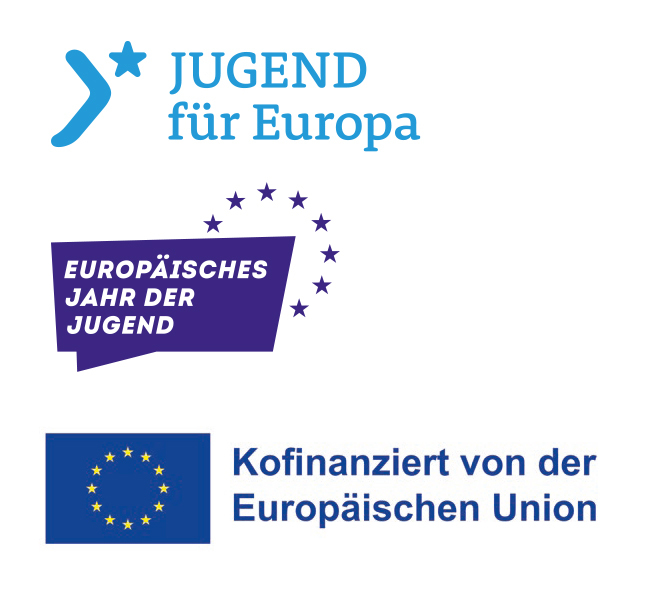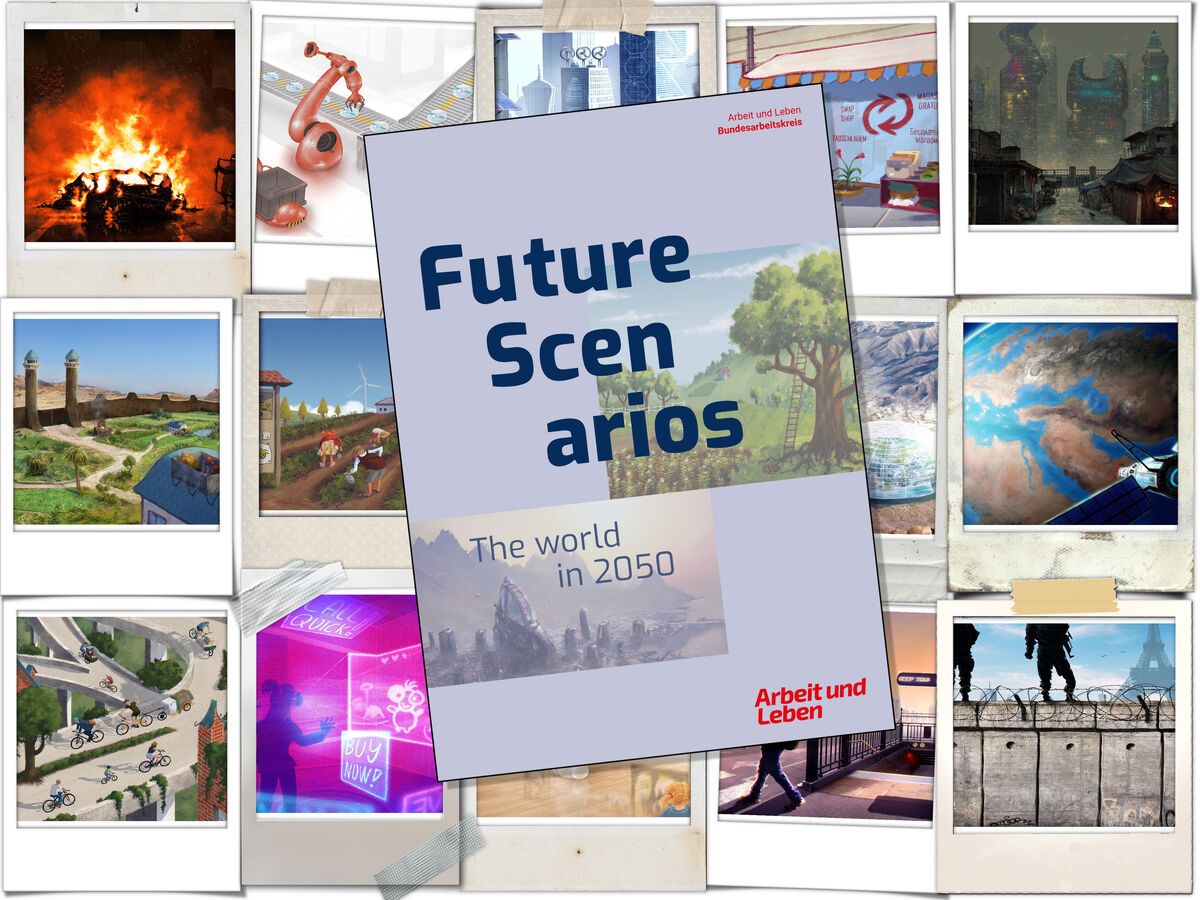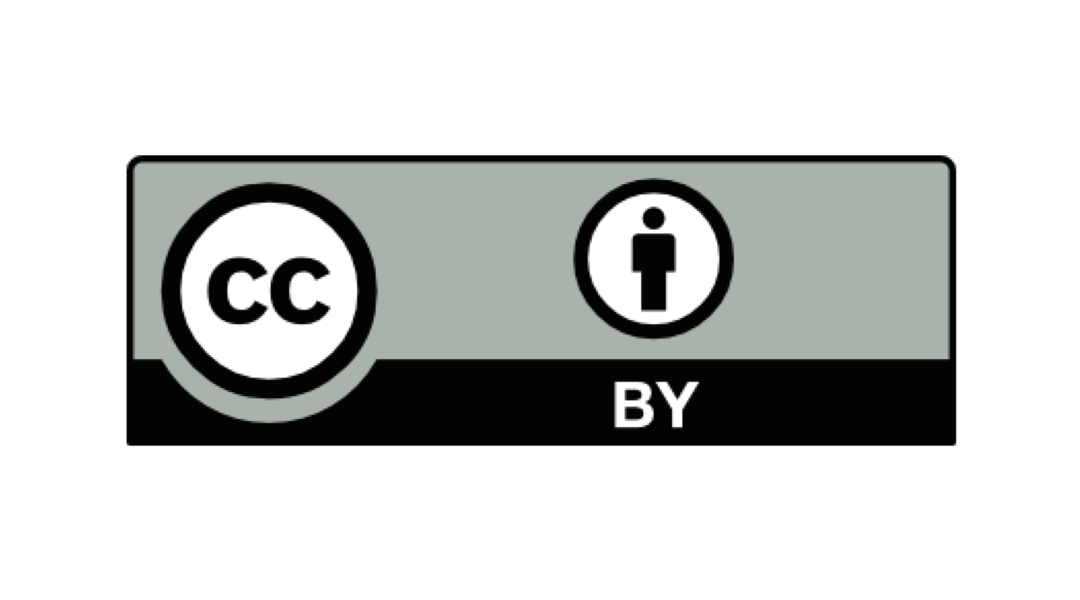Future Scenarios - The world in 2050
Everyone has - at some point - wondered what their own life will look like in the future. Will we ever fly to work? Might we one day live in space to protect our own planet? Are robots the solution to all our problems? Or does everything just stay the way it is? - With the method "future scenarios - the world in 2050" we want to get into conversation with young people on this topic.
Looking to the future is always associated with a certain degree of uncertainty
It is not so easy to look into the future. Once again, human society is on a cusp of various future scenarios that will begin to gravely affect our future lives and following generations. The challenge that may arise is the change that has already begun. However, the development of artificial intelligence in connection with quantum computers could also lead to a singularity, the consequences of which cannot be assessed today.
It is challenging to talk to young people about future scenarios. What will 2050 hold for us? Will there still be nation states? How will society deal with the challenge of climate flight? What role does artificial intelligence play in our lives? Can climate change be slowed down?
Definition and objective of the method
"Future Scenarios - The World in 2050" method aims to deepen some of these questions in relation to different areas of life with different answers. Scenarios Constructions claim to describe future development scenarios that can occur with a certain probability. The method enables young people to take a look into the year 2050 and to discuss this insight. Five very different versions of the future are presented, which deal with society, technology, the environment, human coexistence, politics, etc. The participants get these scenarios played one after the other as audio podcasts and can then position themselves according to them. Prepared questions encourage the participants to put themselves in the scenarios. The method is supported by images that the participants can assign to the respective scenario. The core element is the discussion of the scenarios. The participants are encouraged to deal with positive and negative visions of the future and to position their own views and predicitions to this visions, always linked to the question: In which world do you want to live?
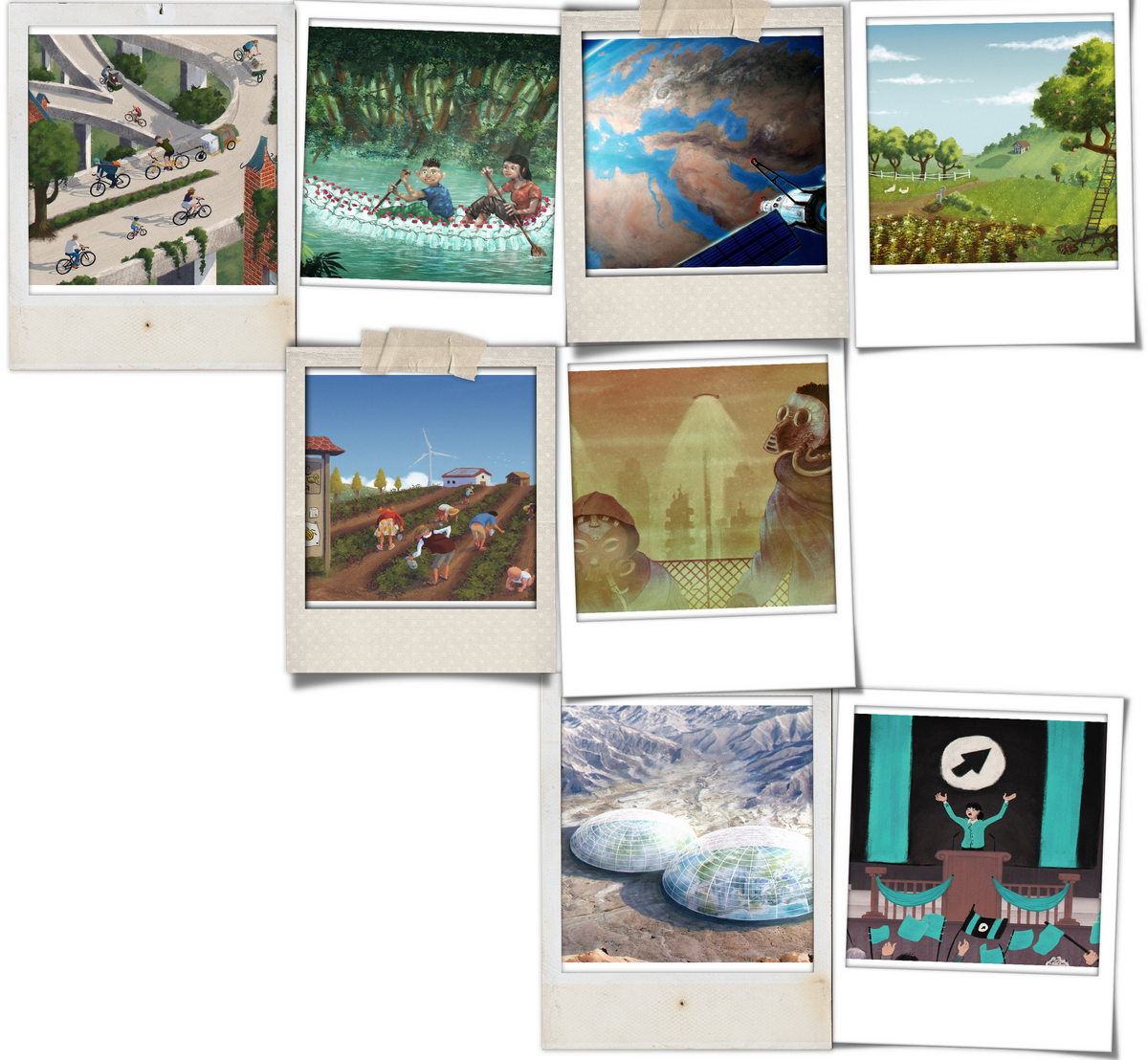 The scenarios range from technological utopias and dystopias to post-growth ideas and business-as-usual scenarios. They are designed in such a way that they should not be read in bold black and white. Each of these "visions" contains both positive and negative approaches. The evaluation of these approaches is then up to the participants. In this method, the seminar leader acts primarily as a moderator in order to put what has been heard in relation to the reality of life of the participants.
The scenarios range from technological utopias and dystopias to post-growth ideas and business-as-usual scenarios. They are designed in such a way that they should not be read in bold black and white. Each of these "visions" contains both positive and negative approaches. The evaluation of these approaches is then up to the participants. In this method, the seminar leader acts primarily as a moderator in order to put what has been heard in relation to the reality of life of the participants.
The aim of the "Future Scenarios - The World in 2050" method is to give young people a glimpse of a medium-term future: to ask about their wishes, needs and fears and thereby initiate a process of (political) participation among the participants.
With the focus on "Global Learning", work and life has set itself the goal of promoting differentiated education for sustainable development, without moralizing and with different methodological approaches and places of learning that enable a change of perspective. Such a change of perspective is to take place through the method "Future Scenarios - The World in 2050" . Young people should imagine their future self in the year 2050. An exciting but also challenging change of perspective.
The question of their own future is of essential importance for young people at the transition from school to working life. After all, the choice of future profession is ideally a life choice. Not an easy task for a 16 or 18 year old. Of course, this decision is a highly individual one and is treated as such in most cases. However, an intensive examination of what the world of the next 50 years of professional life will look like rarely takes place. The "Future Scenarios - The World in 2050" method gives young people the opportunity to deal intensively with a social future that goes beyond individual decisions. Integrating this change of perspective into the (upcoming) biography of the participants should be the task of the seminar leader as a "stretch goal".
Possibilities and limitations of the method
When creating the scenarios, it was important to us to follow the guideline "Prohibition against Overwhelming" from the Beutelsbacher consensnus. While civil education can be inspired by movements like Fridays for Future or Extinction Rebellion, it must not become a campaign or activism platform. The "Future Scenarios - The World in 2050" method relies heavily on the activation and participation of the participants and provides suggestions for discussions and debates. The methode also doesn't shy away from exaggerations in individual places, but refrains judgement. And even more important: It shows different approaches to the future. The negotiation process happens in the seminar group and of course in each individual.
The method is completely digitally available in German, English and French. An Russian Version is coming next.
This method and all the materials are OER licensed and, like this text, released under a CC BY 4.0 license.
description of the method:
Future scenarios - The world in 2050 (PDF, 11 MB, English, optimized for A4-Print)
Materials:
- Quotes (PDF, optimized for A3-Print)
- Headlines (PDF, optimized for A4-Print)
- Pictures (PDF, optimized for A4-Print)
- the audio files can be downloaded here:
The materials were created as part of the work of the working group „potential for participation and options for action in the digital world“ in the Kinder- und Jugendplan des Bundes at Bundesarbeitskreis Arbeit und Leben.
Authors:
Robin Hyde, Johannes Kemnitz
Publisher:
Bundesarbeitskreis Arbeit und Leben e.V.
Robertstraße 5a
42107 Wuppertal
Telefon: 0202 97404-0
Fax: 0202 97 404-20
E-Mail:
Web: www.arbeitundleben.de
Editor:
Carina Schönberger
Graphic designer:
Gregor Müller (gregormueller.net)
Translation:
Andreas Kubitza (with support by Mary Hall and Lelah Ferguson)
Voice actor:
Andreas Kubitza (with the kind support by Radio F.R.E.I.)
The committee would like to thank Prof. Dr. Jiré Emine Gözen and Dr. Michel Raab, as well as Pauline Schottmann and Carolin Pfeifer for their support in the preparation of this material.
When citing this publication, the author should be credited as follows:
This work was created by Arbeit und Leben and is licensed under a Creative Commons Attribution 4.0 International License.
The creation of the method was made possible by the Kinder- und Jugendplan des Bundes:
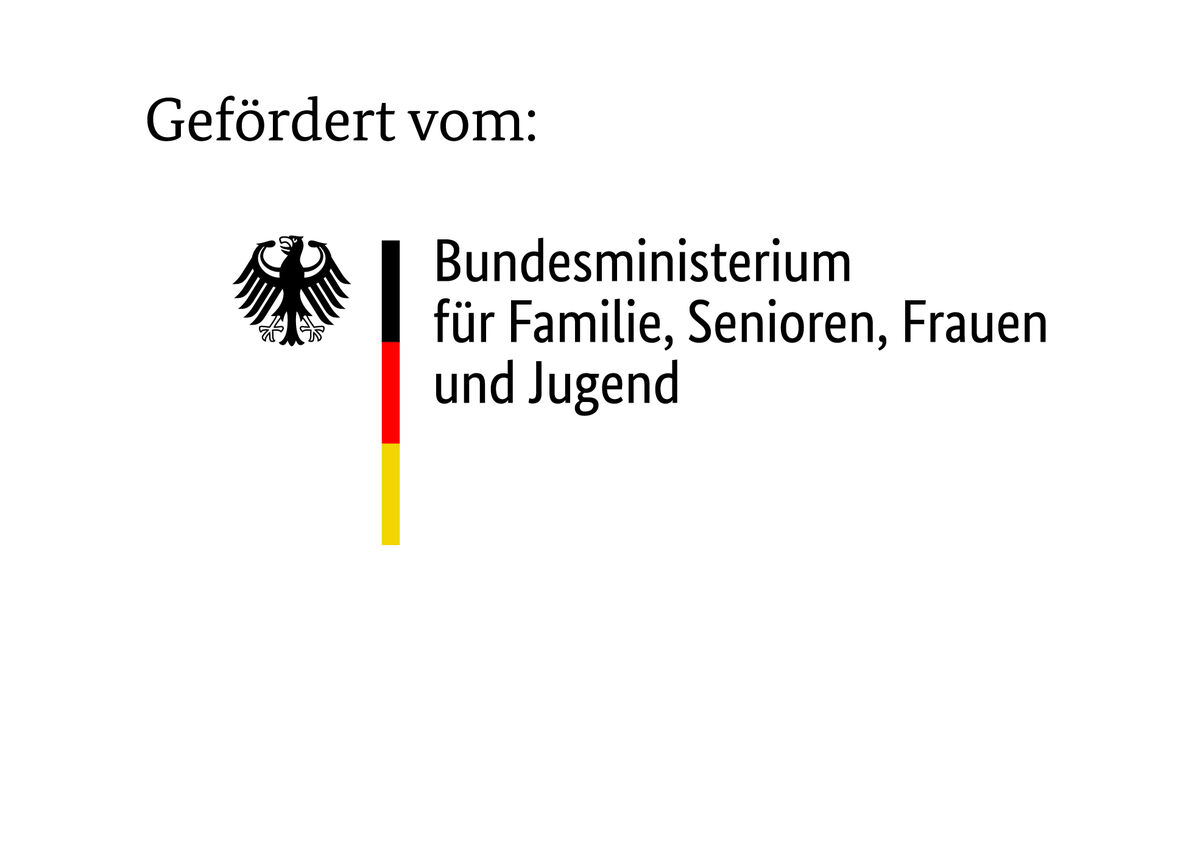
the english translation of the scenarios was funded by:
